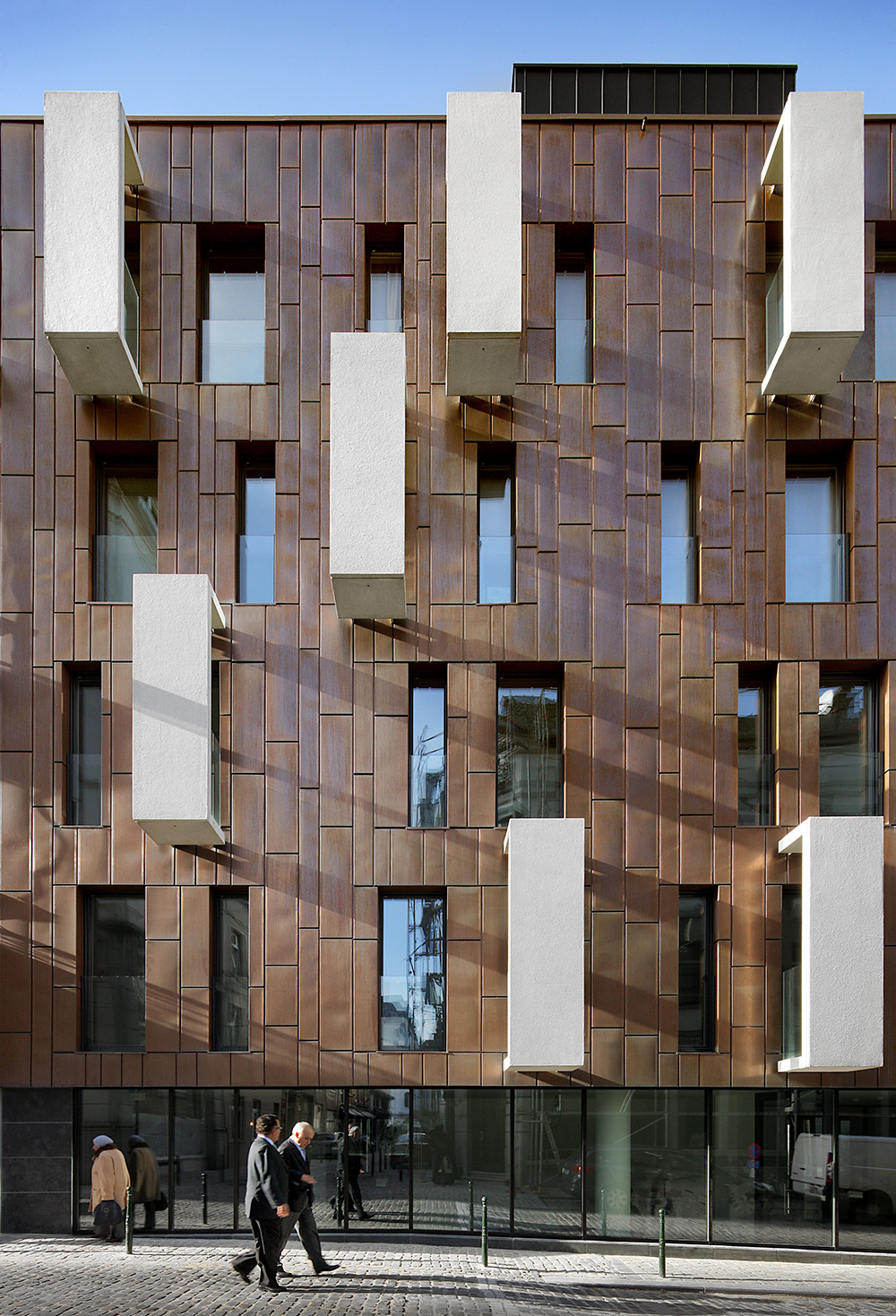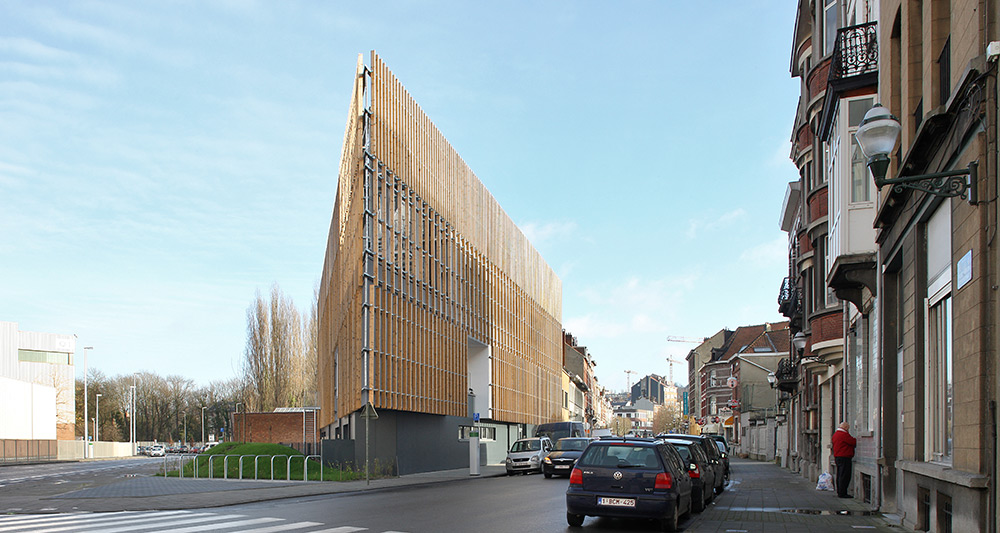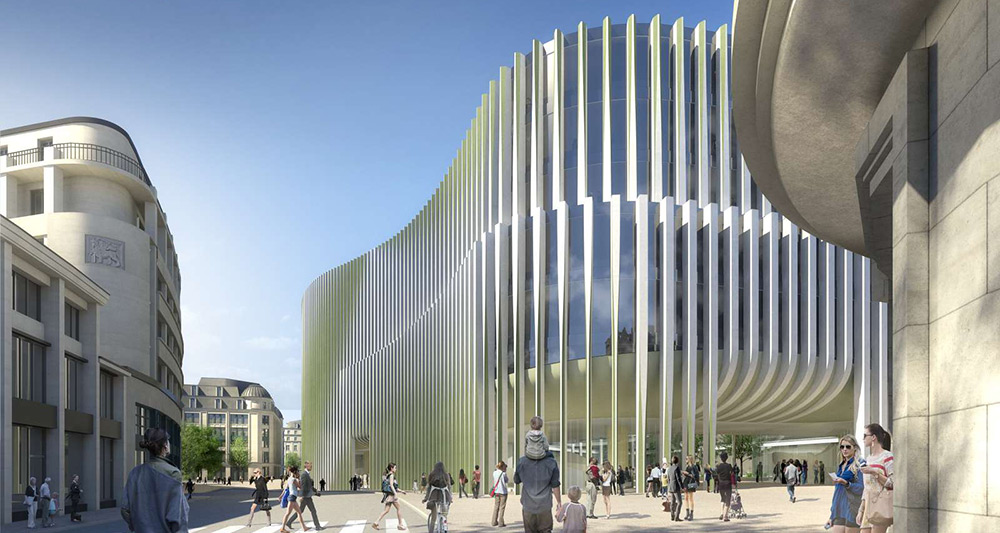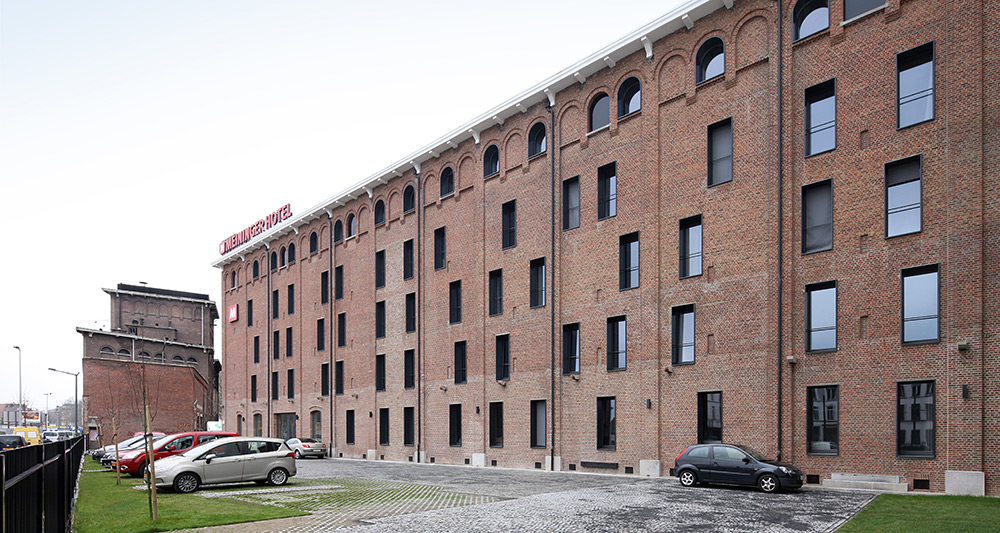
- Insight
- Posted
How Brussels went passive
Ten years ago Brussels had some of the most energy inefficient building stock in Europe — now it boasts a groundbreaking policy that means all new buildings in the region must be passive. How did the city do it?
This article was originally published in issue 17 of Passive House Plus magazine. Want immediate access to all back issues and exclusive extra content? Click here to subscribe for as little as €10, or click here to receive the next issue free of charge
Brussels may be known as the home of the European Union — and it may be regarded as a modern and cosmopolitan city — but back at the start of the 2000s, the city-region’s buildings were among the worst performing in Europe in terms of energy efficiency. Most of the city’s buildings were built prior to 1970, at a time when energy was cheap, climate change was unheard of, and nobody cared about insulation.
In 2001, about 250 megajoules (MJ) of energy was lost per square metre of wall in Brussels — compare that to about 50MJ in Sweden, and 100MJ throughout much of Europe. But as climate change came on the radar, and the European Union was preparing its first directive on the energy efficiency of buildings, the city had to act.
With poor building stock and limited potential for large-scale renewable energy projects— no coastline for offshore wind, no hydropower resources, little land for biomass — Brussels turned towards energy efficiency. In 2004, the city elected a new coalition government led by the Socialist Party, with strong representation from the environmentalist Ecolo Party too. Crucially, Ecolo’s Evelyne Huytebroeck was appointed minister for the environment and energy.
The ministry was looking for new policy ideas, and architect Sebastian Moreno-Vacca was one of a few early advocates who emphasised the passive house standard to the new government. “It started from the bottom up,” he says of how the government was persuaded to embrace the standard.
The government announced a competition to stimulate the sustainable building sector. The Batiment Exemplaire — or Batex for short — offered funding of €100 per square metre to buildings that met a series of environmental targets. Anyone could apply — self builders, large corporations, private developers, even the city authority itself. Ninety percent of funding went to the building contractor, 10% to the developer. The fund was available for both new build and renovation projects.
Passive house advocates like Moreno-Vacca pushed the standard, arguing that the passive house design software PHPP made for a simple way to compare the energy efficiency of different projects and decide which should be awarded funding. The passive house standard was subsequently written into the Batex criteria — meeting it wasn’t essential, but developers were advised to use it as a reference point.
“The passive house concept was an existing high performance standard, with a developed calculation method, so it seemed a logical choice,” says Joke Docx, director for energy at Brussels Environment, a government agency. “No other high energy performance standard came into our mind.”
Projects applying for the funding had to meet a series of other environmental goals too — they had to be as close to zero emission as possible; prioritise environmentally friendly materials, water efficiency and biodiversity; demonstrate a high standard of architecture and design; and use simple and replicable technologies that were cost-effective and offered good payback times, rather than being too hi-tech.

Conix RDBM’s Pépin development, a 4290 sqm office, gallery and apartment building. Photo: F Dujardin
The applications rolled in, and not even the property crash could slow them down — in fact applications only increased as developers sought any financial help they could get in tough economic times. “The more the crisis deepened, the more people went for it,” says Moreno-Vacca.
By 2009, Brussels had 80,000 square metres of passive house buildings planned or built. With funding from the government, the local passive house associations the PMP and PHP helped designers and builders to get to grips with the standard free of charge. The coalition government returned, and promised to keep the Batex programme going. “They said okay, let’s do another year — and after two or three years everybody was fulfilling passive house,” says Moreno-Vacca. ““It’s really the market that went to passive house.”
The government also funded a quarterly magazine, Be.Passive, that published clear and simple information on the passive house standard. Ad campaigns and outreach events aimed to promote and demystify passive house. People living in passive buildings, many of them low income residents, were asked to serve as passive house ambassadors. The passive house associations, in conjunction with different industry groups, started to offer free training. Spurred on by the certainty that the programme would continue, local manufacturers started to develop their own passive house components, meaning developers no longer had to import specialist products at extra cost. Low energy windows with better solar factors came on the market as architects sought to design office buildings with lots of glass, while still meeting passive house criteria on overheating.
“Since the beginning of our policy in 2006, we have seen the emergence of more architects and contractors with experience in passive house and the availability of more [passive] products,” Joke Docx says.
By the time the Batex programme ended in 2014, it had funded the construction of buildings covering 621,000 square metres — and more than half of this was passive. In 2012, 16% of construction activity in Brussels was Batex funded, generating €319m in turnover and creating over 1200 jobs.

A2M’s passive offices and crèche for Commune de Forest
Few Batex projects actually sought full certification from the Passive House Institute, though. Moreno-Vacca says because developers were getting financial support to meet the standard, it was hard to convince them to pay for a separate cert. And by 2012, the city was already planning to make passive house mandatory, based on the success of the Batex programme. The previous year, the regional government passed a law mandating that from 2015, all new buildings and major renovations in the city would have to be passive houses.
Moreno-Vacca says the government mainly passed the law, “because they didn’t know what they had voted for!” No feasibility studies were actually carried out in preparation for it, he says.
Soon, lobby groups representing architects, contractors and the property industry started to object. They said the airtightness target (0.6 air changes per hour at 50 Pascals) would be too onerous and expensive to meet, that more than one type of ventilation should be permitted (the rules only permitted mechanical ventilation with heat recovery), and that many buildings would struggle to meet the standard if their orientation and shape wasn’t right.
Industry representatives sat down to negotiate with government officials and passive house advocates. But campaigners fighting the passive house corner had something big on their side — the Batex programme itself.
There didn’t need to be a feasibility study when Batex had acted as one giant, eight-year long trial for the passive house standard in Brussels.
“After a couple of years and after several calls for projects, we had experience, and real life passive projects,” Joke Docx says. “This gave us proof that it was technically and economically feasible.”
The vast majority of builders had been able to meet the airtightness standard fine under Batex, using simple masonry construction with internal wet plaster. Plenty of architecturally striking passive buildings were funded by the programme too — it didn’t just mean building boring compact boxes.

An illustration of Baumschlager Eberle’s new passive HQ design for BNP Paribas
Cost surveys also showed Batex-funded passive house buildings didn’t cost much more either — €1,503 per square metre for a standard home, and €1,514 for a passive home. For non-domestic buildings, it was actually cheaper to build to the passive house standard, while passive refurbishments cost just 5% more than the non-passive equivalent.
When talks concluded, the standard was mostly kept intact. As per the passive house standard, space heating demand would be 15 kWh/m2/yr. The airtightness requirement would be 0.6 air changes per hour, but its introduction would be delayed until 2018.
The overheating requirement would be even tighter than the Passive House Institute’s standard — indoor design temperatures could only rise over 25C 5% of the time. Designers could specify their own ventilation system of choice, so long as they met minimum air flow requirements (though in practice specifying heat recovery ventilation has been the only way to meet the space heating target).
But what’s more, the same standard would also apply to retrofit projects that upgraded more than 75% of a building’s fabric. Smaller retrofit projects would have to upgrade their individual building elements to passive levels, too. The city would use its own building energy compliance software — the equivalent of Sap in the UK or Deap in Ireland — to determine if a project met the standard, because of a belief that European rules meant it couldn’t use a commercial package like PHPP (ed. – solicitor Philip Lee argues that this is not the case, citing Dutch case law which demonstrates that a commercial software can be specified – even in the more legally onerous area of public procurement – providing an “or equivalent” caveat is added). Moreno-Vacca says that about 75% of buildings that meet the ‘Brussels Passive’ standard also meet the requirements of PHPP.
A new coalition government came to power in 2014, and some lobby groups saw this as an opportunity to get rid of the law. But the legislation had years of momentum behind it, and the new government decided to leave the law in place, to at least see how it worked out. January 2015 came and went. “It was supposed to be the end of the world and nothing happened,” Moreno-Vacca says. “Now it’s the market who’s leading.”
He says that cost surveys have revealed that the same factors make building in Brussels cheap or expensive, regardless of whether it’s passive or not. For one, collaboration between designers and contractors from the early stages of a project keeps costs down — as does letting Brussels builders use the traditional masonry-and-plaster techniques they have been familiar with for decades.
He also says that designers and contractors have kept control over costs by learning how to meet the stringent requirements of the local standard — but without going beyond them. This could mean allowing a few cold bridges, or some double glazing on large-scale buildings, so long as the overall building still meets the requirements. “A lot of tricks came out of the market,” he says.
Earlier this year the government, under pressure from lobbyists, removed the airtightness requirement. But Moreno-Vacca doesn’t believe it matters — meeting the space heating demand target without excellent airtightness is very difficult anyway, he says. And airtightness is a much cheaper way of getting your energy demand down than putting in loads of extra insulation. “Now this is coming from the market. This again is an unexpected consequence,” he says.
Passive house has become normal in Brussels. “When people buy these apartments, some don’t know it’s a passive house — it’s just a building.” Because every new building is built as a passive house now, and many are large office or apartment buildings where occupants change frequently, it’s not possible to give everyone an induction — this obliges designers to make their buildings simple and easy to maintain.

A2M’s 8700 sqm Belvue Hotel
Now Brussels is looking to take a broader view of the sustainability of its built environment, by integrating whole life cycle assessment into the way it regulates buildings.
“Passive house is not the goal, it’s a step,” Moreno-Vacca says. He talks about a future of zero energy buildings, of self-sufficient buildings. “Can you do a building that regenerates the environment?” he asks — one that captures CO2, one that adds biodiversity to the environment?
It’s been almost ten years since the first phase of the Batex programme, when the city first started to embrace the passive house standard. Brussels now has over one million square metres of passive buildings, either built or approved for planning.
“We were frontrunners ten years ago, but now everybody is doing that,” Moreno-Vacca says. “So what are we doing next?”

